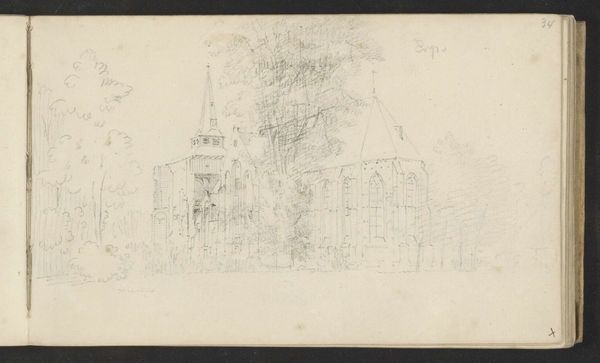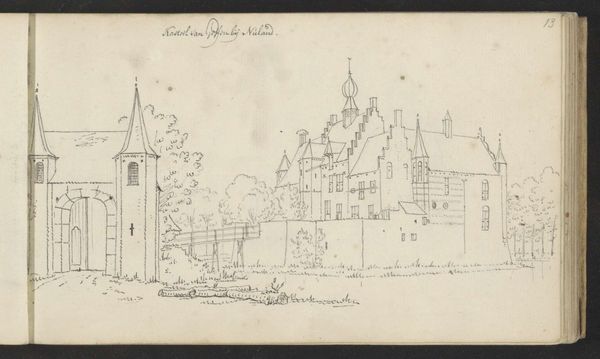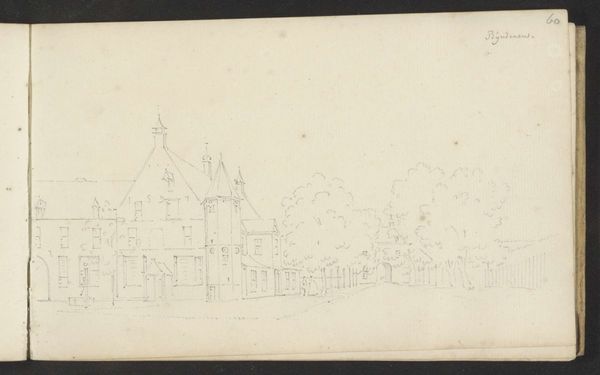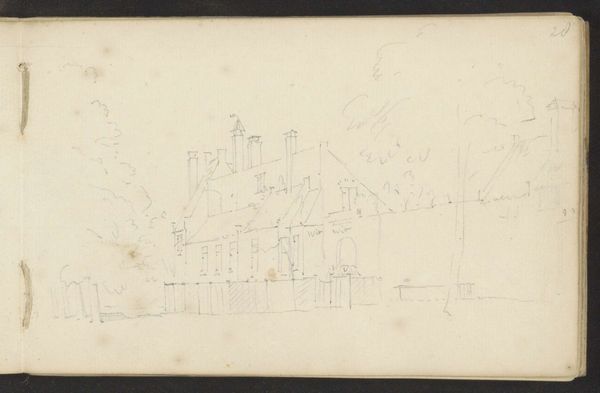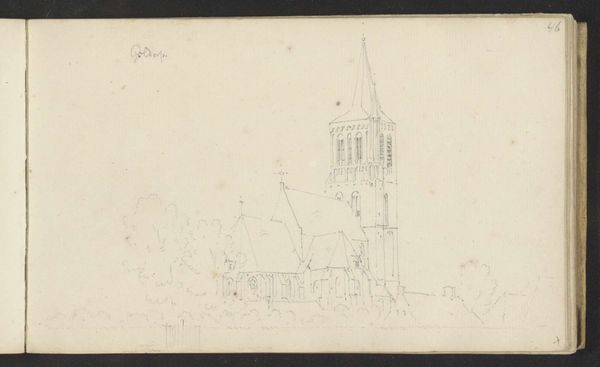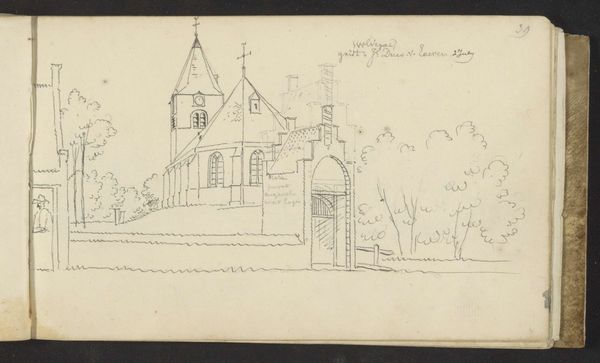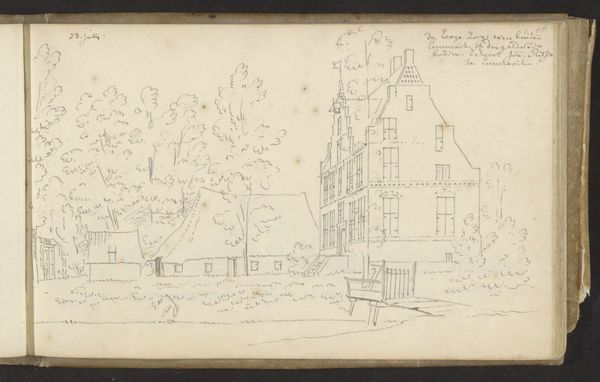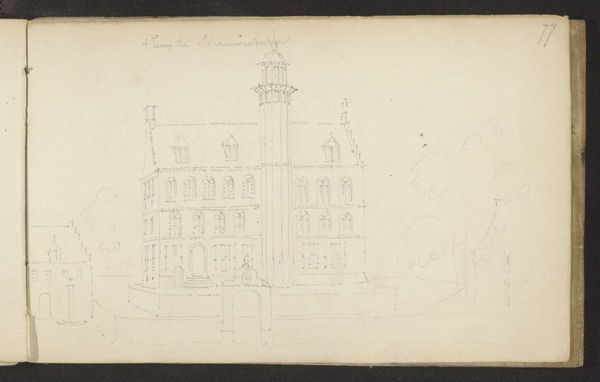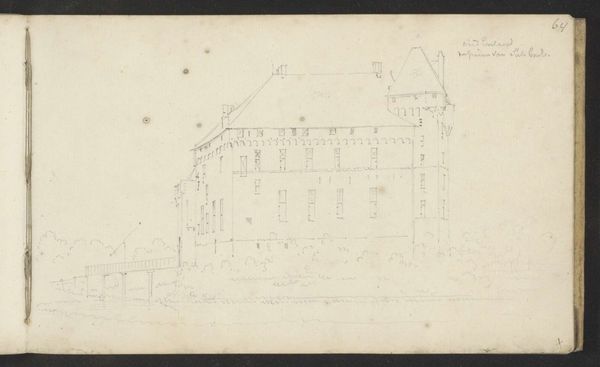
drawing, paper, pencil
#
drawing
#
baroque
#
dutch-golden-age
#
landscape
#
paper
#
pencil
#
cityscape
Copyright: Rijks Museum: Open Domain
Curator: This pencil drawing, entitled "Kasteel Croy," was created by Cornelis Pronk sometime between 1701 and 1759. It’s currently held in the collection of the Rijksmuseum. Editor: My first impression is how ethereal it seems, almost ghost-like, a hazy memory. The lines are so delicate. Curator: The loose lines definitely lend it an air of transience. But let’s consider the socio-political climate. Pronk was working during the Dutch Golden Age, but as that era waned, we see a growing fascination with depicting symbols of power and status, often viewed through a lens of longing or critique. Editor: Yes, and the artist's choice to work with simple pencil on paper—such humble materials to depict such a grand subject! This heightens the contrast and asks us to examine how form embodies meaning. Look at how Pronk uses line weight to create depth; the castle feels monumental, yet slightly faded into its surroundings. Curator: Exactly! These detailed architectural drawings were frequently commissioned by wealthy patrons as documentation of their estates, serving as powerful assertions of social position. Was this artist's project more critical commentary or simple historical record? That, I believe, is the tension that gives the work its strength. And, the lack of color emphasizes a kind of austere dignity, perhaps reflecting the values upheld by those who inhabited or commissioned the work. Editor: I see that now. The muted palette emphasizes the building's geometry; its form dictates its meaning. Considering the age and likely fragility of the paper, it's striking how much detail is preserved, underscoring a timeless grandeur despite the ephemeral qualities of the drawing medium itself. Curator: Precisely. The fragility highlights the ephemeral nature of power and ownership. It's a commentary embedded within the strokes. Editor: A compelling observation. Seeing the layers of history within those faint lines makes me reconsider my initial impression. Curator: As does deconstructing its lines to understanding that it represents cultural layers of a different type for me.
Comments
No comments
Be the first to comment and join the conversation on the ultimate creative platform.
